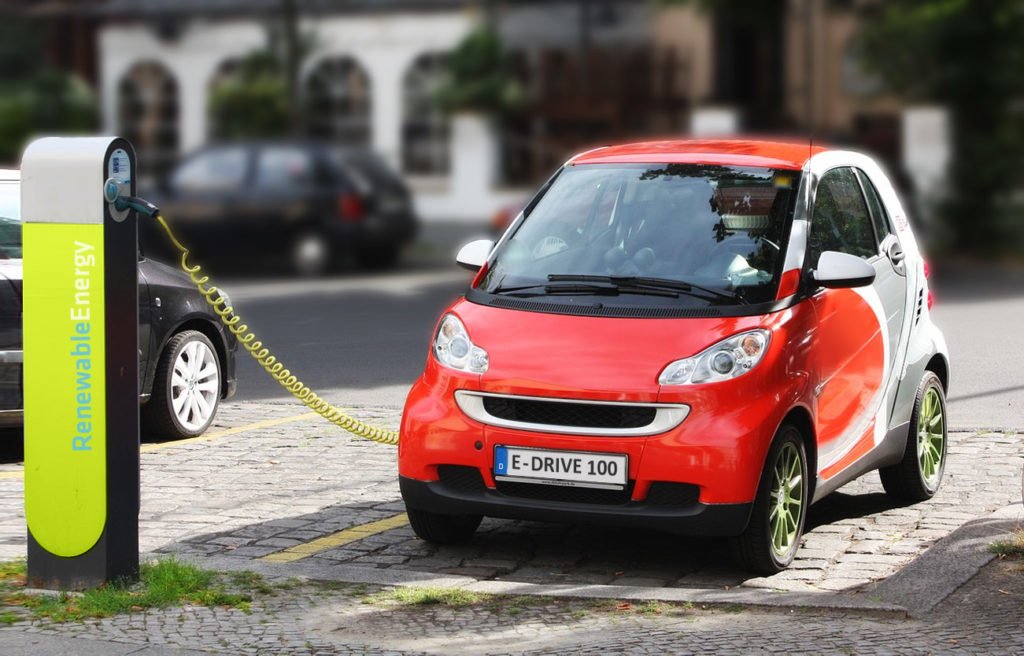New study finds improved air quality would avoid health and climate damages
17 August 2020

A new study finds if electric vehicles replaced 25 percent of combustion engine cars currently on the road, the United States would save approximately $17 billion annually by avoiding damages from climate change and air pollution.
Credit: Michael Movchin / Felix Müller / CC BY-SA (https://creativecommons.org/licenses/by-sa/3.0)
AGU press contact:
Lauren Lipuma, +1 (202) 777-7396, [email protected]
Northwestern University press contact:
Amanda Morris, +1 (847) 467-6790, [email protected]
Contact information for the researchers:
Daniel Peters, Environmental Defense Fund, Austin, Texas
[email protected]
Daniel Horton, Northwestern University, Evanston, Illinois
[email protected]
WASHINGTON—If electric vehicles replaced 25 percent of combustion engine cars currently on the road, the United States would save approximately $17 billion annually by avoiding damages from climate change and air pollution, according to new research.
Authors of a new study in AGU’s journal GeoHealth combined climate modeling with public health data to evaluate the impact of electric vehicles on U.S. lives and the economy. Results show that in more aggressive scenarios — replacing 75 percent of cars with electric vehicles and increasing renewable energy for every generation — savings could reach as much as $70 billion annually.
“Vehicle electrification in the United States could prevent hundreds to thousands of premature deaths annually while reducing carbon emissions by hundreds of millions of tons,” said Daniel Peters, a climate scientist with the Environmental Defense Fund in Austin, Texas, formerly of Northwestern University in Evanston, Illinois and lead author of the new study. “This highlights the potential of co-beneficial solutions to climate change that not only curb greenhouse gas emissions but also reduce the health burden of harmful air pollution.”
“From an engineering and technological standpoint, people have been developing solutions to climate change for years,” said Northwestern’s Daniel Horton, senior author of the study. “But we need to rigorously assess these solutions. This study presents a nuanced look at electric vehicles and energy generation and found that electric vehicle adoption not only reduces greenhouse gases but saves lives.”
In the new study, Horton, Peters and their team looked at vehicle fleet and emissions data from 2014. They found if 25 percent of U.S. drivers adopted electric vehicles in 2014, and the power required to charge their batteries came from 2014’s energy generation infrastructure, then 250 million tons of carbon dioxide emissions would have been mitigated.
Although the impact of carbon emissions on the climate is well documented, combustion engines also produce other harmful pollutants, such as particulate matter and the precursors to ground-level ozone. Such pollutants can trigger a variety of health problems, including asthma, emphysema, chronic bronchitis and ultimately premature death.
After leaving tailpipes and smokestacks, pollutants interact with their environment, influencing atmospheric chemistry and meteorology. The researchers used a chemistry-climate computer model to simulate these interactions across the lower 48 states, based on different levels of electric vehicle adoption and renewable energy generation. They then combined this information with publicly available county health data from the U.S. Environmental Protection Agency to assess health consequences from the air quality changes caused by each vehicle electrification scenario.
The research team assigned dollar values to the avoided climate and health damages that could be brought about by electric vehicle adoption by applying the social cost of carbon and value of statistical life metrics to their emission change results. These commonly used policy tools attach a price tag to long-term health, environmental and agricultural damages.
“The social cost of carbon and value of statistical life are much-studied and much-debated metrics,” Horton said. “But they are regularly used to make policy decisions. It helps put a tangible value on the consequences of emitting largely intangible gases into the public sphere that is our shared atmosphere.”
###
AGU (www.agu.org) supports 130,000 enthusiasts to experts worldwide in Earth and space sciences. Through broad and inclusive partnerships, we advance discovery and solution science that accelerate knowledge and create solutions that are ethical, unbiased and respectful of communities and their values. Our programs include serving as a scholarly publisher, convening virtual and in-person events and providing career support. We live our values in everything we do, such as our net zero energy renovated building in Washington, D.C. and our Ethics and Equity Center, which fosters a diverse and inclusive geoscience community to ensure responsible conduct.
Notes for Journalists
This research study is freely available. Download a PDF copy of the paper here. Neither the paper nor this press release is under embargo.
Paper title:
” Public Health and Climate Benefits and Tradeoffs of U.S. Vehicle Electrification”
Authors:
D. R. Peters: Program in Environmental Sciences, Northwestern University, Evanston, Illinois, United States; Environmental Defense Fund, Austin, Texas, United States;
J. L. Schnell: Department of Earth and Planetary Sciences and Institute for Sustainability and Energy, Northwestern University, Evanston, Illinois, United States; Cooperative Institute for Research in Environmental Sciences at the University of Colorado Boulder NOAA/Global Systems Laboratory, Boulder, Colorado, United States;
P. L. Kinney: Department of Environmental Health, Boston University School of Public Health, Boston, Massachusetts, United States;
V. Naik: NOAA Geophysical Fluid Dynamics Laboratory, Princeton, New Jersey, United States;
D. E. Horton: Department of Earth and Planetary Sciences and Institute for Sustainability and Energy, Northwestern University, Evanston, Illinois, United States.